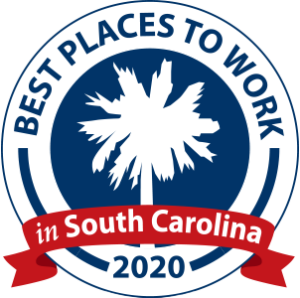
A year ago, I was gifted a new power tool – a cordless, 20-volt, impact drill. You should know that I own a perfectly functioning 12-volt, 10-year-old, top-of-the-line cordless power drill. It works great and we’ve accomplished much in the past 10 years.
Shortly after receiving a new drill, I began a new remodel project and discovered the differences between the old and the new were stark and surprising. As I became more comfortable with my new tool’s capabilities, I had a thought that many of us have had before: “I don’t know what I ever did before I had this! How did I function without it?”
Software can be like a power drill; a good one will make you wonder how you ever got by without it.
Business System vs Process
Before the “new-drill” era, I attempted to anchor an object to the basement floor. My old trusty drill worked hard at it, but just couldn’t get through the hardened concrete pad. I gave up and decided to scrap the operation altogether.
Good software models business processes and provides structure around day-to-day operations. However, operations morph and change over time and what was once good software can become incapable of providing the necessary structure.
Often, implementing a new business process requires the addition of supplemental software. And in some cases, a new process may be scrapped altogether because the current technology simply cannot accommodate it.
But a system should support process, not the other way around and identifying a lack of capability in process is one of the indicators of a system failure. In fact, examining business processes is the first step in evaluating a business’ systems.
Analysis of processes informs whether a business needs new technology, enhancements to existing technology, or both.
LEAN and Six Sigma are helpful practices for approaching process improvement. They provide a framework for evaluating improvements in a systematic way, including challenging estimates of cost savings for improvements.
The Theory of Constraints from LEAN dictates that improving anywhere other than your constraint is a waste of money; a chain is only as strong as its weakest link. A stronger drill bit wouldn’t have given me the capability to anchor something in my basement, and switching my process to superglue wouldn’t have solved the problem either.
The constraint was my drill, and the improvement I needed was new technology.
Identify areas for business process improvement.
Efficiency Constraints with Legacy Software: What can’t you do efficiently?
Not only did my new drill let me complete projects that would have been impossible before, but it also increased the speed and efficiency with which I tackled existing projects.
Take my backyard fence, for example. When I installed the fence I decided to use rough cut red oak boards from a local sawmill. Other than appearance, the single biggest difference between this lumber and what you’d purchase at your local hardware store is the density/hardness of the wood itself.
After bending nail after nail, I decided to use screws to mount the boards to their fence posts. My old, faithful drill proved its ability to screw through that hard lumber, but each battery would only last long enough to install a handful of boards. I was faced with the choice of spending more money for additional batteries or spending more time waiting for my batteries to recharge.
That was 20 years ago. The fence has held up well, but it recently needed a new section installed. Even in the hardest of boards, my new drill took less than half the time to seat each screw. I was also able to complete the job on just two batteries with no additional time for recharging!
Insufficient applications hinder efficiency by requiring more manual labor to keep them up-to-date and limiting your ability to scale up your business.
Let’s look at a business with one employee dedicated to importing the previous night’s orders into the ERP system for several hours each day. If sales were to scale up, the business would be forced to hire an additional employee. Giving you two employees with low productivity due to working on an inefficient system.
Outdated systems also lead to codifying processes into institutional knowledge, placing yet another constraint on efficiency.
Creating a standard, repeatable process frees the knowledge required to complete a task from one single person’s mind, allowing multiple people to execute the process.
Related: 23 Real World Examples of Business Automation
Security: What can’t you do securely?
I wish I could say that my new drill is far more secure than my old. But alas, here’s where the analogy breaks down. Nevertheless, a discussion of replacing legacy software would be incomplete without highlighting security.
While I can still injure my hand if I were to try to hold onto the object I am drilling (not recommended), the threat to companies today comes not from improper use of their applications but from the activities of external actors that need to be kept at bay.
The risk and prevalence of security breaches has pushed advances in technology and software that could be the single reason to upgrade or replace your legacy applications. If your software models your business process perfectly but isn’t secure…what’s the cost of that risk?
- Legacy systems carry an increasingly greater risk as support for older software is phased out, making maintenance more costly and data backup in case of disaster more difficult.
- Legacy systems are often an amalgamation of various software applications and technologies, many of which were added quickly in response to some change in process or business need.
Not only do these separate components require longer downtime for upgrades, but they also make for a time-consuming and labor-intensive reporting process in the event of an audit.
Software Modernization: When is it worth upgrading?
The cost to your business of an outdated system isn’t just visible in terms capability, efficiency, and security. Legacy software also impacts your revenue.
Your customer facing systems are a factor in how your clients feel about your brand; if your systems are mismatched with your processes, you are likely losing business to your competition. A system’s lack of detail in data reporting will also cost you potential revenue in monetizing that data.
Many high-profile acquisitions are driven by the prospect of further monetizing a captured audience. The acquired companies are garnering enormous goodwill additions to what their balance sheets might depict.
Evaluating a critical legacy application can be a daunting but necessary task. Ask yourself:
- Is your legacy software costing your business efficiency and growth?
- What does it keep you from doing?
- What can’t you do efficiently?
- What can’t you do securely?
Many companies struggle to answer these questions, and having the necessary requisite knowledge to answer them takes time and experience. Kopis has been helping companies like yours get the answers they need for over 20 years. We’d welcome the opportunity to help your company, too. Book a discovery call today.
This blog post was originally published on May 8, 2022 and was updated August 24, 2023


